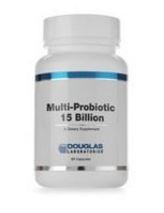By: Pamela Egan, NP
A broken hip or a hip fracture is a very common injury, especially in older adults and in the elderly. Broken hips are the most common bone fracture that requires hospitalization. Hospitalizations for broken hips are rising each year to the tune of about 300,000.
Falls are the most common cause of hip fractures in the elderly. High-force injuries such as motor vehicle accidents are the most common cause of hip fractures in younger patients who typically have stronger bones. Pathologic fractures such as weakened bones from infection or cancer can also be a cause of hip fractures.
Usually, osteoporosis is the cause of hip fractures in the elderly. Osteoporosis is a condition that causes loss of bone mass. The bones are thinner and weaker than normal. Adults with osteoporosis are at much higher risk of developing a hip fracture than someone without osteoporosis. The risk of osteoporosis is on the rise possibly due to an overall decrease in hormone replacement therapy and low vitamin D levels. Other risk factors associated with hip fracture are females, Caucasians, and sedentary lifestyle.
There are two types of hip fractures. A femoral neck fracture occurs when the ball of the ball-and-socket hip joint is fractured off the femur. Treatment of a femoral neck fracture depends on the age of the patient and the amount of displacement of the fracture.
Interotrochanteric hip fracture occurs just below the femoral neck. These fractures are easier to repair more often than femoral neck fractures. The usual surgical treatment involves placement of a plate and screws to stabilize the fracture.
Treatment of a hip fracture almost always requires surgery. Some surgeons are using a newer implant that uses a rod inserted down the center of the bone rather than a plate along the outside of the bone. Both types of fracture fixation (the plate and the rod) have shown good healing and have had excellent results.
Physical therapy is usually started immediately and patients can usually walk with their full weight on the implant. Patients are usually encouraged to begin walking immediately following surgery. Most commonly, patients will get up with the physical therapist the next day following surgery. It usually takes a year for full recovery.
Complications often occur in patients who suffer broken hips. By getting patient up and out of bed as soon as possible, the risk of complications is reduced. Mortality rates in the first year following a broken hip are around 25%, and the rates are highest in older populations. The cause of death following a hip fracture is often due to blood clots, pneumonia, or infection. Furthermore, only about 25% of patients who sustain a broken hip return to their pre-injury level of activity. About one year after a patient sustains a broken hip, mortality rates return to normal, but a patient who previously sustained a hip fracture is at higher risk of breaking their hip again.
Treatments for osteoporosis are available, and will help elderly individuals avoid serious complications of this disease such as a broken hip.
An assortment of products are available through medical equipment stores that can help to reduce the risk of the slips and falls that lead to hip fractures. Mobility devices such as medical walkers, rollators, canes and power scooters can help to provide ambulatory assistance to elderly individuals, as well as to those with limited strength or mobility.
Bathroom safety devices can also help to reduce the risk of injury in one of the most dangerous areas of the home for susceptible individuals. Among the most effective of these items are grab bars. Grab bars (also known as safety rails) can be mounted against a wall, inside the shower and on the wall of the bathtub. They provide a gripping surface to help individuals maintain balance and avoid falling down (and ostensibly breaking a hip). Shower chairs provide a seating surface for inside the tub, thereby eliminating the need to stand. This in turn dramatically reduces the risk of slipping while in the shower. Raised toilet seats reduce the amount of bending over necessary for one to assume a seat on the toilet. Finally, non-slip bath mats add traction to the floor of the tub or shower, making it less slippery and subsequently less dangerous.
Lastly, nutrition plays an important role in preventing both osteoporosis and hip fractures. By making a point of getting good nutrition, the risk of osteoporosis and weak bones in general is reduced significantly. The elderly should almost without exception see to it that they are ingesting sufficient amounts of calcium, magnesium and vitamin D3, either through diet or supplements. Since estimating the amount of these nutrients in one’s diet can be so difficult, I receommed going the supplement route just to be sure.
It is important when buying supplements to insist on vitamin D3 (cholecalciferol) as opposed to supplements containing ergocalciferol (vitamin D2). D3 is more readily absorbed by the body, and is a far more effective form of the nutrient in terms of boosting the immune system, preventing disease and improving bone density.


